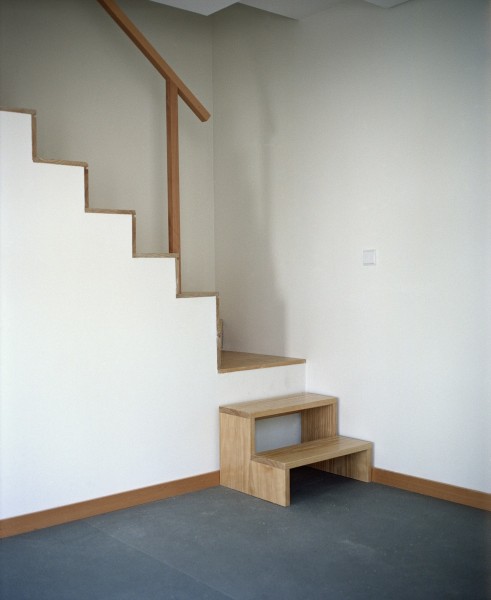

The social housing neighbourhood of São João de Deus, originally built during the 1940s, is characterised as a work typically associated with the architectural model known as “‘Soft Portuguese”, which the old fascist regime adopted as stylistic dogma in national public buildings of the time. Over time, but particularly during the last three decades, the neighbourhood has undergone dramatic alterations that have lost the character of its origins, changed its main urban and typological qualities, and generalised construction in an anarchic and informal way, causing serious residential and social damage. The transformation of the existing constructions restores their original volumetrics, giving them a renovated image that is not arbitrary but the result of the extreme rationality of the constructional options for the transformation of its space and form: The reconfiguration of the original typologies was developed in order to achieve apartments with a larger living area, with greater spatial flexibility, and adapted to the current regulations. The technical decisions associated with a radical principle of economy of scale, of what is essential to the construction and the thorough maintenance of its built elements (principal and structural) formed the sustainable essence of the transformation of the existing core:
- Continuous used of a single span (the existing span) for all openings, which involves the repetition of the same window and door details more than 700 times, in standard wooden profile, ensuring crossed natural ventilation.
- Integral maintenance of the external wall of structural stone, as well as the wooden roof structural supports.
- Re-covering of the roof structure with a light system (so as not to overload the existing wooden supports) of waterproofing and insulation, formed of a layer of PIR + asphalt fabric, finished with black slate, going down through the gable wall, adding a gravitational drainage system, watering the gardens and that will avoid the need for hydraulic infrastructures throughout the all complex.
- Strong insulation of the external street and garden walls, strengthening the thermal inertia of the thick stone structure, finished in white thermal plaster.












The construction of the new buildings completes the establishment of the complex that was never finished to the south and allows for an increased number of available houses, keeping the scale of the earlier architectural context. The new two stores blocks apartments are designed to enclosure singles houses (one on top of the other) with direct and independent entry. The volumes seat in their gardens in the back entrance door façade and expose their windows to the street. The combination of these project conditions gives the complex a new urban charisma that, along with the typological rationality will contribute to a radical renovation. To increase this feeling, the last four parallelepiped volumes of the complex extension of the neighbourhood as adapted to the existing and sloped topography, use the same (and only one) window dimension and detail already used in the complex but exposing a black curtain masonry, in a simple and traditional brick ventilated wall. It brings up the clarity and radical economy of the intervention, and creates an organic transition between the urban complex and the south landscape, still bucolic and expectant. The construction is very simple and archaic, following the extreme economic concept of the all. The buildings are structrured with a punctual and light concrete frame with very small spans. An interior mud masonry fulfills de volumes between supporting pillars, protect by outside continuous thermal insulation. The form is totally expressed by the black massive brick curtain, enclosures a ventilated surface that assures the healthy of the construction. Roof cornices, doors and windows details are made with armed laid down pieces of brick, taking advantage of its construction traditional technique language and giving a subtle ornamental brief note in the façade. The choice of black klinker, gives the buildings a solid and charismatic scale, keeping it compact and somehow abstract. The choice of the white joints, enhance the brick work and gives realism to the housing atmosphere. In a way, the elementary of the housing boxes get its complexity in the contrasted white joints turning highly visible each brick element.










project:
s. joão de deus social housing
(1st prize, limited competition)
nominated for the
mies van der rohe award 2022
location:
porto, portugal
date:
2014-2018
intervention area:
26 732 m2
architecture:
nuno brandão costa
collaborators:
rita leite (coordination)
charlotte jeanjean, francisco pereira, inês loureiro, joão fânzeres, maria souto moura, mariana santos
structural engineer:
ana isabel vale (abprojectos)
hydraulic engineer:
miguel vale (abprojectos)
electrical engineer:
maria da luz santiago (rs associados)
mechanical engineer:
raul bessa (get)
photographs:
andré cepeda
